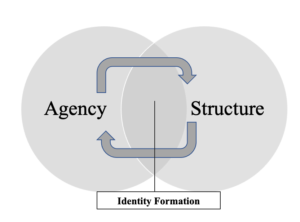Author: Ana Raquel Dias
Editor: Paul Nicolas Möller
Introduction
The concept of ‘middle power’ is one of the major conceptual debates within the literature of international relations. Generally speaking, a middle power denotes an international actor who is not a great power but whose actions in the international system are still considerable when compared to small powers (Efstathopoulos, 2017). Classic examples include Canada, Australia, or Sweden in addition to more recent contributions that also consider the emergence of Brazil, South Africa, or Malaysia (Jordaan, 2017, p. 2). However, definitions in the literature face a conceptual deadlock which is caused by broader discussions on what theoretical framework is better suited to assess ‘power’ in the international system.
Attempts to conceptually define a middle power were traditionally based on rationalist approaches and, consequently, structural sources of power (Riddell, 1948; Holbraad, 1971; Wood, 1987). As the latter successively leads to vague and inconclusive results due to a positional conception, this article will suggest a behavioral and dynamic approach. This essay will unravel how constructivism is better placed to conceptually frame middle power under a relational vision that conceives power as an ‘action strategy’ of values, ideas, and beliefs in identity formation. Middle power is conceptualized as a dynamic identity shaped by behavioral sources of power (Cooper, Higgott, & Nossal, 1993; Carr, 2014).
The text is divided into two complementary parts: First, the rationalist conceptual stand on middle power will be presented along with its drawbacks; secondly, the contribution of constructivism will be identified with the purpose of conceptually clarifying middle powerhood under a relational power approach.
The deadlock: A rationalist approach, a structural vision
Discussions on ‘middle power’ within academia are characterized by the absence of clarity regarding what it means and how it takes place (Cooper, 1997, p. 1). At first sight, the term is relative to the existence of other types of powers, great or small ones. However, there is considerable disagreement on which is the best approach to assess a state’s power range. In fact, power is extremely hard to measure (Tellis, 2000, p. 14).
The rationalist theory conceives a structural power approach by measuring its material sources in reference to quantifiable variables of economic strength (GDP), population size, military capability, and other comparable attributes (Wood, 1987). From this point of view, a middle power is deemed to be a positional status located between the other two types, therefore possessing mid-range levels of power (Holbraad, 1971).
Yet, a set of drawbacks needs to be noted: (1) there are no agreed-upon variables in the literature that could undoubtedly point to a degree of power; (2) many of these material indicators, such as GDP, economic capacity or population size are constantly changing and, therefore, not comparable; (3) considering structural variables results in a long and diverse list of middle powers as many states exhibit average material indicators when compared to great powers (Jordan, 2017, p. 3); (4) equally positioned states are unlikely to demonstrate similar behavior (Jordan, 2017, p. 3). In sum, positioning alone tells us little about what middle powers are or might do. In the end, the conceptual deadlock concerning ‘middle power’ stems from the lack of consensus on what variables should be measured and how much each should weigh (Cooper, 1997, p. 14).
The conceptual problem, presented in Figure 1, is a direct consequence of a deeper debate between structural versus relational approaches to power embedded in the wider theoretical dualism of rationalism versus constructivism (Baldwin, 2002).
Figure 1. Theoretical-conceptual debate on Middle Power: Rationalism versus Constructivism.

Source: Adapted from Holbraad (1971); Wood (1987); Wendt (1992); Baldwin (1992); Cooper, (1997).
Rationalist theory prevailed in explaining international phenomena until the end of the Cold War. Yet, constructivism rose from that point onwards precisely when the international reality became opportune and advantageous for more states to ‘punch above their weight’ (Robertson, 2017, pp. 3-10). Based on Wendt’s (1992) constructivist position, the next section seeks to explore how Baldwin’s relational power may provide a framework that better captures the essence of middle powerhood.
Constructivism and relational power: The deadlock crackers?
Many authors have recognized the complexity of analyzing power, namely Morgenthau (1948), Waltz (1979), and Guzzini (2000). In fact, there is a general acknowledgement of the disappointing state of coherence within the academic debate on such an important subject (Baldwin, 2002, p. 177). However, regarding the theoretical framing of the concept of middle power, constructivism is deemed to be better placed by providing a broader but more precise approach.
Within a constructivist framework, a relational power approach (Baldwin, 1992) considers behavioral sources in reference to the intersubjective meaning and interpretation of values, ideas, and beliefs (Wendt, 1992, p. 399). From this perspective, a middle power is an identity within the international system that is shaped through a continuous dynamic between agency and structure (Figure 2).
Figure 2. Agency-structure dynamic in identity formation.

Source: Adapted from Wendt (1992).
To assess power, Baldwin’s (1992) framework (Figure 3) looks at the action strategy of the identity formation (agency-structure interaction) which has implicit values, beliefs, and ideas. The model sets a multidimensional approach to power based on the scope, domain, weight, costs, and means of the action strategy (foreign policy) by comparing the agency of a middle power (A) in relation to other actors in the system (B): What behavior aspects do middle powers seek to affect in B? (Scope); How many actors are middle powers able to influence? What is the range of its influence? (Domain); How effective are middle powers’ actions upon B? (Weight); How costly is it for middle powers to influence B? How costly is it for B to comply with middle powers? (Costs); What means do middle powers choose? (Means).
Figure 3. Baldwin’s Key Dimensions of Power.
| Scope | Aspect of B’s behavior affected by A. | |
| Domain | Number of other actors subject to its influence. How big is B? How many Bs are there? | |
| Weight | Probability that B’s behavior is or could be affected by A. | |
| Costs | Is it costly or cheap for A to influence B? Is it costly or cheap for B to comply with A’s demands? | |
| Means |
|
Appealing to value-laden symbols in discourses, propaganda, framing practices, and narratives |
|
Increasing or reducing the goods and services available to other countries. | |
|
Actual or threatened military force. | |
|
A wide array of practices: representation, negotiation, etc. | |
Source: Adapted from Baldwin (1992).
Baldwin’s relational power provides a helpful input by providing a more precise framework and by considering broader indicators beyond material variables. It does so in two ways: first, by narrowing down the outcomes of a structural approach significantly and, second, by overcoming problems with material preponderance and measurement by endorsing a comprehensive, multidimensional, and dynamic insight.
Overall, for constructivism, middle powerhood translates into a dynamic identity that results from the continuous employment of a certain foreign policy strategy (agency) based on values, ideas, and beliefs, then is recognized and expected by other actors in the system (structure), leading to the construction of a specific self-understanding and external perception as a middle power, as described in Figure 2.
Final Remarks
The present discussion explored the concept of ‘middle power’ in the light of broader theoretical approaches to the concept of power within international relations.
While rationalism does not seem capable of framing a middle power status internationally due to its limitations on material consideration and positional measurement, a constructivist-based conception seems to crack such deadlock. Constructivism’s broader view on power regarding the relational approach is built upon a continuous dynamic in which domestic and international dimensions are intertwined. A relational power framework adopts an intersubjective notion of power based on values, ideas, and beliefs that not only overcomes rationalist drawbacks but is also more inclusive by relying on a multidimensional view. Constructivism, in this sense, reaffirms indeed that a middle power is a comparable status in relation to other powers in the international system, as earlier stated in the introduction. However, instead of a comparable position, it is a comparable identity that continuously constructs itself.
This brief discussion has sought the academic revival of the concept of middle power. In the end, a deeper understanding of these actors is of valuable insight when acknowledging movements of power diffusion among several players who are shaping the international system beyond the agency of great powers.
References
Baldwin, D. (2002). Power and international relations. In B. A. Simmons, W. Carlsnaes, & T. Risse (Eds.), Handbook of International Relations (pp. 177-219). London: Sage.
Chapnick, A. (1999). The middle power. Canadian Foreign Policy Journal, 7(2), 73-82. doi: 10.1080/11926422.1999.9673212
Cooper, A. F., Higgott, R., & Nossal, K. (1993). Leadership, followership, and middle powers in international politics: A reappraisal. In A. F., R. Higgott & K. Nossal, (Eds.), Relocating middle powers: Australia and Canada in a changing world order (pp.12-32). Vancouver: UBC Press.
Cooper, A.F. (1997). Niche diplomacy: A conceptual overview. In A. F. Cooper, (Ed.), Niche Diplomacy: Middle Powers after the Cold War (pp. 1-24). Basingstoke: Palgrave.
Efstathopoulos, C. (2017). Middle Powers and the Behavioural Model. Global Society, 32(1), 47-69. doi:10.1080/13600826.2017.1351422
Gilley, B., & O’Neil, A. (2014). China’s rise through the prism of middle powers. In B. Gilley, & A. O’Neil, (Eds.), Middle powers and the rise of China (pp. 1-17). Washington DC: Georgetown University Press.
Holbraad, C. (1971). The role of middle powers. Cooperation and Conflict, 6(1), 77–90.
Jordaan, E. (2017). The emerging middle power concept: Time to say goodbye? South African Journal of International Affairs, 24(3), 395-412. doi: 10.1080/10220461.2017.1394218
Tellis, A. (2000). “Power” and national power: Some conceptual clarifications. In A. Tellis, J. Bially, C. Layne, & M. McPherson, (Eds.), Measuring National Power in the Postindustrial Age (pp. 14-24). Santa Monica, CA: RAND.
Wendt, A. (1992). Anarchy is what states make of it: the social construction of power politics. International Organization, 46(2), 39-425.
Short bio: Ana Dias is a PhD candidate in Political Science and International Relations at the University of Minho, Portugal. She is also a research collaborator at CICP – Research Center in Political Science. Her work is currently focused on unravelling the dynamics of global governance, more particularly, the emergence of sub-state actorness in climate change under the Paris Agreement.
Note: The author acknowledges that this study was conducted at the Research Center in Political Science (UIDB/CPO/00758/2020), University of Minho and was supported by the Portuguese Foundation for Science and Technology and the Portuguese Ministry of Education and Science through national funds.


